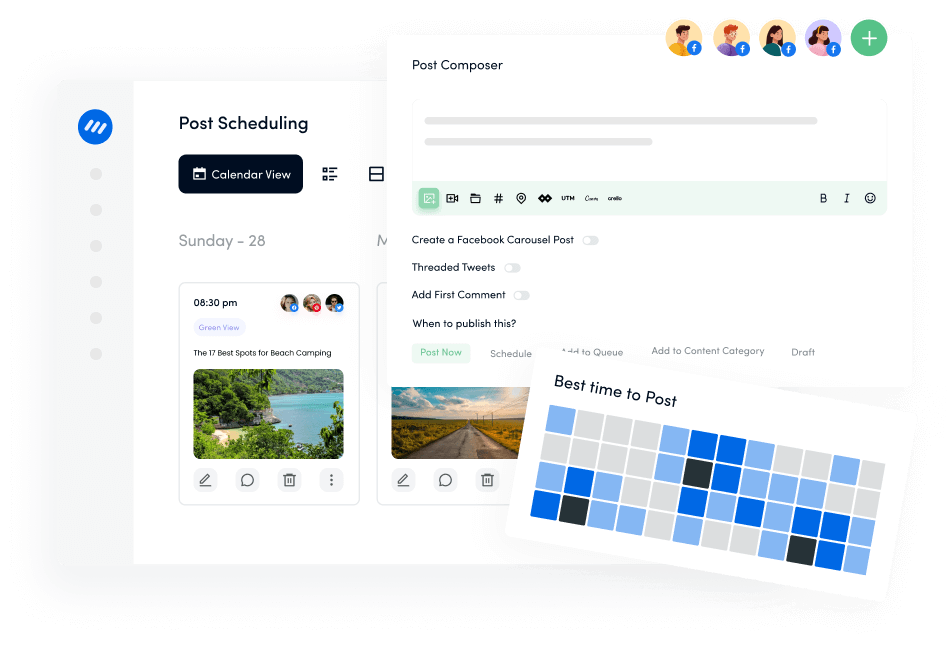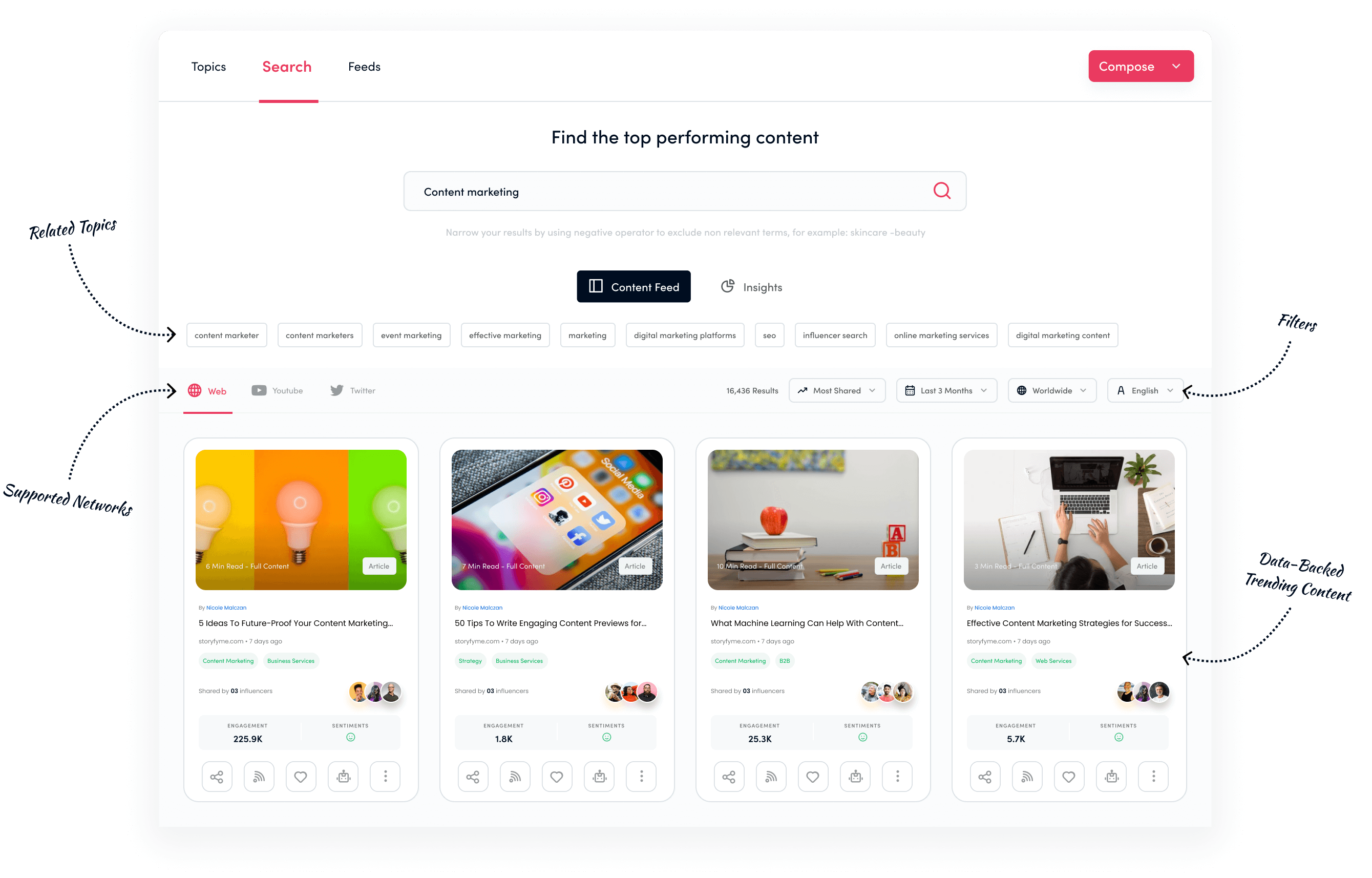Bulk-generate & schedule posts in seconds with Smart Scheduling. Try now!
How to turn honest user reviews into high-converting content

Harnessing the voice of real customers can feel like magic to any marketing team. Honest user reviews speak with a level of trust that paid ads rarely reach. Yet, turning those raw words into content that drives clicks and sales takes more than copying and pasting. It calls for a clear plan, careful editing, and respect for the customer’s original message.
This guide walks the reader through each step, from collecting feedback all the way to measuring fresh revenue. Every tip stays friendly, practical, and suitable for small shops or growing brands alike. By the end, any team should feel ready to turn simple praise or critique into high-converting stories that make buyers believe.
The easiest way to manage and grow your social channels.
Try ContentStudio for FREE
Better still, the process costs little more than time and care. Reviews already sit inside inboxes, comment threads, and online reviews for businesses, offering a rich supply of real-world stories waiting to be reused. When a brand mines that gold the right way, fresh content appears faster than a full photo shoot or video session. That speed lets campaigns stay current with seasonal needs and shifting trends.
Why reviews outperform ads
Modern buyers want proof before spending money. They trust family first, but honest peer reviews come a close second. Research from leading e-commerce platforms shows that a single star increase can lift sales by five to nine percent.
Addressing buyer concerns
This jump happens because reviews answer real fears:
- Will the product last?
- Does shipping run late?
- Is the sizing true?
When past customers share wins and woes, future shoppers picture their own outcomes. This mental rehearsal turns interest into intent.

Building trust through transparency
Brands that hide or alter feedback break that trust chain and risk backlash. In contrast, embracing even a few mixed notes proves confidence and transparency, both strong conversion drivers.
As a bonus, honest feedback guides product fixes and fresh ideas, feeding a positive loop. Reviews are not side noise; they are persuasive assets that cost nothing to collect and can outshine expensive ads. Firms that treat them with care gain an army of storytellers eager to help close the sale.
How to collect and select reviews for marketing
Before a brand can craft new content, it has to gather the right source material. Public comment walls, survey forms, support chats, and review platforms all hold jewels. Starting with a central hub saves time and reveals patterns.
Centralizing and tagging feedback
Export reviews into a spreadsheet and tag them by theme, tone, and product. Color-code by star rating—five-star, mixed, and even one-star—to spot recurring issues or praise.
Assign someone as the “review librarian” to manage weekly updates. This keeps feedback fresh and avoids backlog. Back up files in cloud storage and set strict editing rules: correct only spelling or remove personal data—never alter the core message.
Not every review deserves a place in your marketing content. The goal isn’t volume; it’s impact. Prioritize reviews that reflect real customer value and speak directly to common buyer hesitations.
Facebook Marketing
Manage and grow your brand on Facebook. Create, schedule, and publish posts, videos, and Reels to Facebook pages and groups.
Get Started for FREE
Filtering for quality, not just stars
Rather than relying on five-star ratings alone, look for reviews that reveal specific outcomes or pain points resolved. A three-star review that clearly explains what worked and what didn’t can be more persuasive than a vague five-star one. Focus on statements that:
- describe measurable improvements (e.g., “cut shipping time by half”),
- reflect relatable scenarios (e.g., “as a first-time buyer…”), or
- express emotional shifts (e.g., “I finally feel confident…”).
Spotting what resonates with new customers
Think like someone considering your product for the first time. Which reviews would help you decide? Pull excerpts that naturally answer common pre-purchase doubts; like ease of use, durability, or return policies; without sounding rehearsed. These are the reviews that carry real persuasive power.

Building a flexible review shortlist
Assemble a shortlist of high-impact reviews in a shared doc or spreadsheet. Don’t just file by product; tag by theme (speed, savings, service), tone (enthusiastic, cautious, relieved), and trigger moment (first use, problem solved, expectation exceeded). This lets you match the right quote to the right campaign later, without sifting through dozens each time.
Using negative or neutral feedback strategically
Balanced perspectives can strengthen trust. If a review mentions a flaw but also credits a helpful fix or support response, it becomes a trust anchor, not a liability. Just ensure there’s a meaningful resolution you can highlight. When curated well, even criticism becomes part of your brand’s credibility.
Turning reviews into stories
Narrative arc
Transform raw quotes into mini customer journeys using a three-act structure:
- Setup – What challenge did the customer face?
- Turning point – The review quote showing the change.
- Resolution – The result or benefit they gained.
“Before switching to our meal kit, Maria spent over an hour planning dinner. Now I cook in fifteen minutes, and my kids actually help!”
Writing techniques
- Use short paragraphs and simple transitions like “then,” “so,” “now”
- Add sensory language (smell, color, tone) for emotion
- Break up long quotes with em dashes or italics for flow
CTAs that convert
Wrap up each story with a gentle CTA: invite readers to learn more, read additional reviews, or try it themselves.

Visuals that amplify trust
Words tell; images prove. Match reviews with authentic visuals:
Photo and video best practices
- Customer-submitted photos
- Product snapshots in real use
- Logos beside quotes (B2B)
- Charts (e.g., faster delivery times)
- Video testimonials (even short clips)
Formatting tips for visual consistency
- Compress files for fast load speed
- Use alt text and consistent styling (rounded corners, brand colors)
- Create quote overlays or short video montages of reviewers
Structuring review-based content
A strong layout ensures readers don’t just skim— they act.
Suggested layout
- Headline – Clear benefit + customer proof
- Intro – Common pain point
- Body – Split into blocks (e.g., “Saved Time”, “Better Support”)
- Quotes + explanations per section
- Bullet summary – Key wins
- CTA – Light nudge toward product or signup
Draft an outline first. This helps shape smooth transitions and gives designers time to build visuals alongside copy.
Plan, schedule, share, and analyze content for 15+ social media channels.
Try ContentStudio for FREE
Repurposing reviews for social media
Platform-specific formats
- X (Twitter): 50-character highlights + visual
- Instagram: Snippets + bold color backgrounds
- Reels/TikTok: Overlay quote on demo video
- Carousel:
- Slide 1 – Problem
- Slide 2 – Quote
- Slide 3 – Outcome

Boosting engagement
- Tag reviewers (if possible)
- Use questions to invite responses
- Track clicks, likes, and shares to guide future picks
Rotate review content among platforms to keep feeds dynamic and avoid fatigue.
Adding SEO power with reviews
Schema and long-tail keywords
- Use natural phrases from reviews as long-tail keywords
- Apply schema like Review or AggregateRating for rich snippets
- Avoid duplicate content: paraphrase or use iframe embeds
Keeping review content fresh
- Update pages monthly with new quotes
- Add FAQ sections based on recurring review themes
- Link between product and review pages for crawlability
Measuring review content performance
No strategy is complete without performance metrics.
Metrics to track
- Conversion rates
- Page views
- Time on page
- A/B test differences
- Clicks from UTM-coded links (especially in emails)
Building an internal dashboard
- Monthly wins
- Review-based lifts
- Suggestions for next iterations
Even a 1% lift from better content can scale into major revenue gains.
Content Discovery
Find the top-performing content on the web and never run out of social media post ideas.
Get Started for FREE
Keeping the feedback loop alive
Encouraging new reviews
- Send an email 3 days after delivery
- Keep forms short (rating + 3 questions)
- Offer loyalty points or giveaway entries
Humanizing the process
- Rotate staff who write thank-you replies
- Log fixes inspired by reviews for future content
- Spotlight reviewers in newsletters and social posts
Recognized reviewers become repeat buyers and vocal brand advocates.
Honest user reviews are a goldmine; authentic, free, and emotionally persuasive. By curating and amplifying them with structure, storytelling, visuals, and a touch of creativity, any brand can turn scattered feedback into high-converting, evergreen content.
Whether you’re running a solo shop or scaling a fast-growing brand, the most powerful words in your next campaign may already be sitting in your inbox.
Conclusion
Honest user reviews aren’t just feel-good feedback. They’re one of the most powerful and underused marketing tools at your fingertips. When shaped into stories, organized clearly, and paired with the right visuals, these real customer insights often outperform traditional ads in both trust and conversion.
They give your brand a human voice that potential buyers actually connect with. Reviews speak directly to real concerns, highlight genuine outcomes, and create a sense of transparency that scripted marketing content can rarely match.
The best part is that this approach doesn’t require a big budget or large team. It simply calls for consistency, creativity, and respect for your customers’ words. With a thoughtful system in place, you can keep your content pipeline fresh, build deeper trust, and see steady improvements in engagement and sales.
FAQs
1. Why are honest user reviews more effective than traditional ads?
Because they reflect real experiences, honest reviews build trust faster and speak directly to buyer concerns—making them more relatable and persuasive than paid campaigns.
2. How do I choose the right reviews to repurpose?
Focus on reviews that highlight specific outcomes, emotional shifts, or relatable pain points—regardless of the star rating. Quality and relevance matter more than positivity alone.
3. Can I use negative reviews in my marketing?
Yes—if they show a resolved issue. Balanced stories with clear outcomes can actually build credibility and humanize your brand.
4. How often should I update review-based content?
Ideally once a month. Rotate fresh quotes, add new visuals, and link relevant reviews to your product pages to keep things current and engaging.
Recommended for you


Powerful social media management software
14-day free trial - No credit card required.


